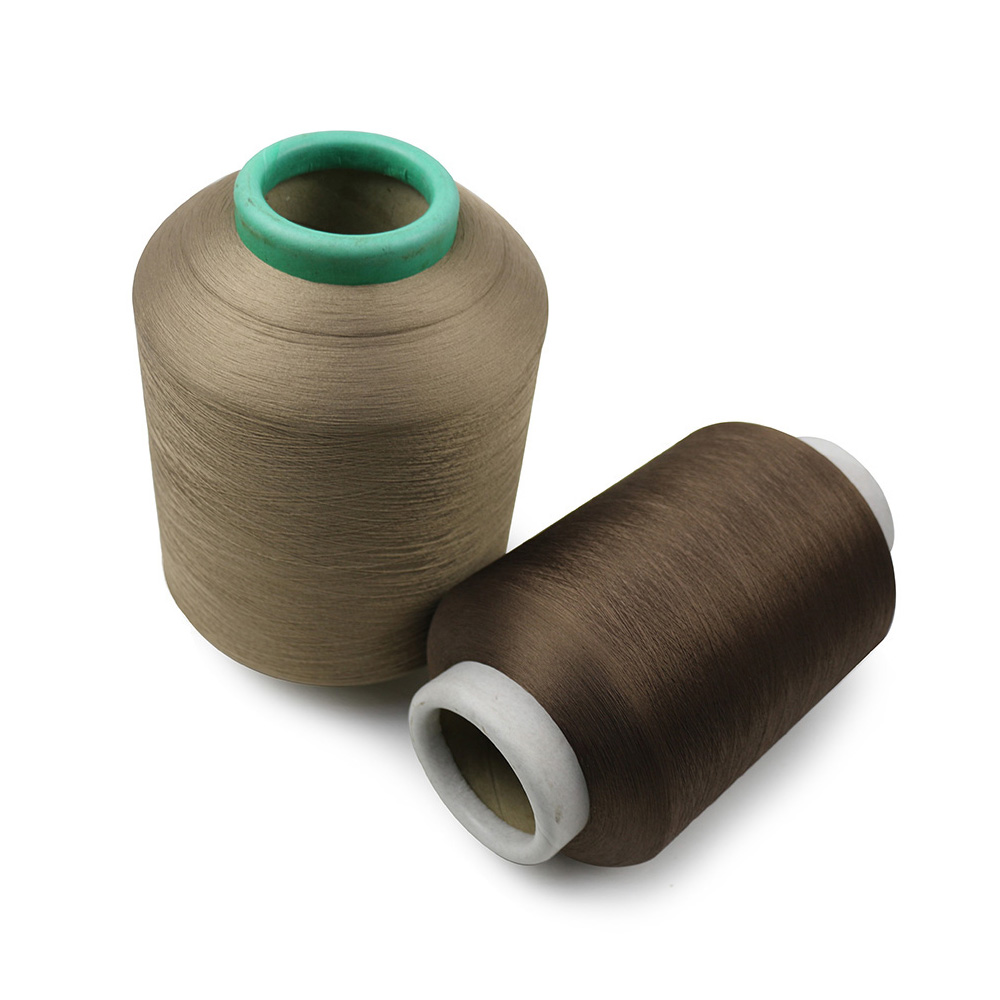If you are interested in some of our products, please feel free to visit our website or contact us for detailed information.

Lubricants and finishing agents play a crucial role in improving the properties of air-covered yarn in several ways:
1.Friction Reduction:
Lubricants serve as a vital component in air-covered yarn production by effectively reducing friction between individual fibers. During the air covering process, where high-speed air jets interlace a wrapping yarn around a core yarn, friction can cause excessive wear and potential breakage of yarn components. Lubricants act as a protective barrier, facilitating smoother interactions between fibers. This minimizes abrasion, reduces yarn breakage, and contributes to overall yarn integrity and quality.
2.Enhanced Processability:
Lubricants are instrumental in enhancing the processability of air-covered yarn. By imparting a degree of slipperiness to the yarn, they enable easier handling during various stages of manufacturing, from creeling and winding to weaving or knitting. Improved processability translates into operational efficiency, as it reduces machine downtime due to yarn-related issues and ensures a more consistent and trouble-free production process.
3.Reduced Static Electricity:
In the textile industry, static electricity can be a disruptive factor leading to yarn entanglement, dust accumulation, and production inefficiencies. Certain lubricants and finishing agents are designed to mitigate static buildup within the yarn. By minimizing static charges, these agents prevent yarn fibers from clinging together, reducing the attraction of dust particles, and preserving the cleanliness and quality of the yarn.
4.Improved Softness and Feel:
Lubricants and finishing agents play a pivotal role in enhancing the tactile properties of air-covered yarn. These additives impart a soft and luxurious feel to the yarn, making it more comfortable against the skin. This attribute is particularly important for textiles such as intimate apparel, lingerie, and baby clothing, where wearer comfort and sensory appeal are paramount.
5.Color Fastness:
The color retention and resistance to fading are critical aspects of yarn quality, especially for textiles exposed to various environmental stressors. Certain finishing agents enhance the color fastness of air-covered yarn, ensuring that the vibrant hues and shades remain intact even when subjected to factors like sunlight exposure, repeated washing, or abrasion. This contributes to the longevity and visual appeal of the final textile product.
6.Moisture Management:
In performance-oriented textiles like sportswear and activewear, effective moisture management is essential for wearer comfort. Lubricants and finishing agents can be tailored to improve moisture-wicking capabilities. This property enables the yarn to efficiently transport moisture away from the body, keeping the wearer dry and comfortable during physical activities.
7.Anti-Pilling:
Pilling, the formation of unsightly fuzz and small balls on fabric surfaces, is a common issue in textiles, particularly in high-friction areas. Lubricants and finishing agents can mitigate this problem by reducing the propensity of yarn to pill. This ensures that the textile maintains its aesthetic appeal and smooth texture even after extended use.
8.Antistatic Properties:
Lubricants and agents formulated with antistatic properties serve industries where static-related issues are prevalent. These additives help to neutralize or dissipate static charges, preventing static-related problems such as shocks, clinginess, and dust attraction. This is especially beneficial in synthetic fiber-based yarns prone to static buildup.
9.Anti-Allergenic Properties:
For individuals with skin sensitivities or allergies, yarns treated with specific finishing agents can offer hypoallergenic properties. These agents minimize skin irritation, making the yarn suitable for individuals with sensitivities or allergies to certain materials or chemical compounds.
10.Flame Resistance:
In applications where fire safety is paramount, certain finishing agents can impart flame-resistant properties to the yarn. This is crucial in industries such as protective clothing and upholstery, where compliance with safety standards is essential. Flame-resistant yarns minimize the risk of ignition and contribute to overall safety.


Air covered yarn (ACY) is a type of yarn that involves simultaneously stretching the wrapped fiber filament and spandex filament through a certain type of nozzle, and regularly spraying and pressing it with highly compressed air to form a rhythmic network of points. The fabric feels soft and smooth.

 English
English Español
Español








